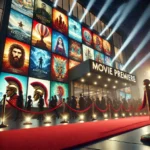Hollywood is filled with films that claim to be “based on a true story,” drawing in audiences with promises of real-life drama, action, or historical significance. However, this claim often raises the question: How accurate are these portrayals? While some movies strive to stick close to the facts, others take significant creative liberties to enhance the drama or entertainment value. In this article, we’ll explore why filmmakers alter the truth and look at a few examples of both accurate and less-than-faithful films based on real events.
Why Do Filmmakers Change the Story?
Movies are a visual and emotional medium, and directors often face a trade-off between factual accuracy and compelling storytelling. Even when filmmakers consult with experts or the actual people involved in the real events, they may still need to compress timelines, combine characters, or enhance drama to fit within a typical movie runtime.
For example, while “Goodfellas” (1990) is considered about 95% accurate by the real Henry Hill, it still made small adjustments, such as changing his family structure for narrative simplicity. Similarly, films like “Catch Me If You Can” (2002) tell a thrilling tale but have been found to embellish or fabricate key elements of the story, including the creation of an FBI character that never existed in real life.
Movies That Get It Right
Some films make an extra effort to stick closely to the facts. Biopics like “The Theory of Everything” (2014) about Stephen Hawking were praised for maintaining a high level of accuracy, with even Hawking himself stating that the movie was “broadly true”. Similarly, “Ford v Ferrari” (2019) impressed audiences with its realistic depiction of Carroll Shelby’s rivalry with Ferrari in the 1966 Le Mans race.
Historical accuracy is often more possible when the narrative focuses on specific events or individuals, but even then, filmmakers sometimes make minor tweaks to make the story flow better on screen.
The Trade-Offs in Creative Liberty
On the other end of the spectrum are films like “Once Upon a Time in Hollywood” (2019), which blend real history with entirely fictional elements. Quentin Tarantino’s film, while loosely based on the Manson murders, diverges from historical facts by presenting an alternate reality. This type of storytelling isn’t meant to be historically accurate, but instead pays tribute to a particular era or cinematic style.
Even more grounded films, such as “Ma Rainey’s Black Bottom” (2020), take similar liberties. Though based on real-life figures, many of the events and interactions in the movie are entirely fictional. This approach allows filmmakers to explore themes and emotions without being restricted by the limitations of historical accuracy.
Conclusion: How Much Should Accuracy Matter?
Ultimately, the level of accuracy in movies based on true stories varies significantly. While some films aim to honor the real events and people they portray, others prioritize entertainment, drama, or thematic exploration over strict factual correctness. For audiences, it’s essential to remember that films labeled “based on a true story” are often a mix of fact and fiction. The key is to appreciate these movies as interpretations rather than exact historical records.


